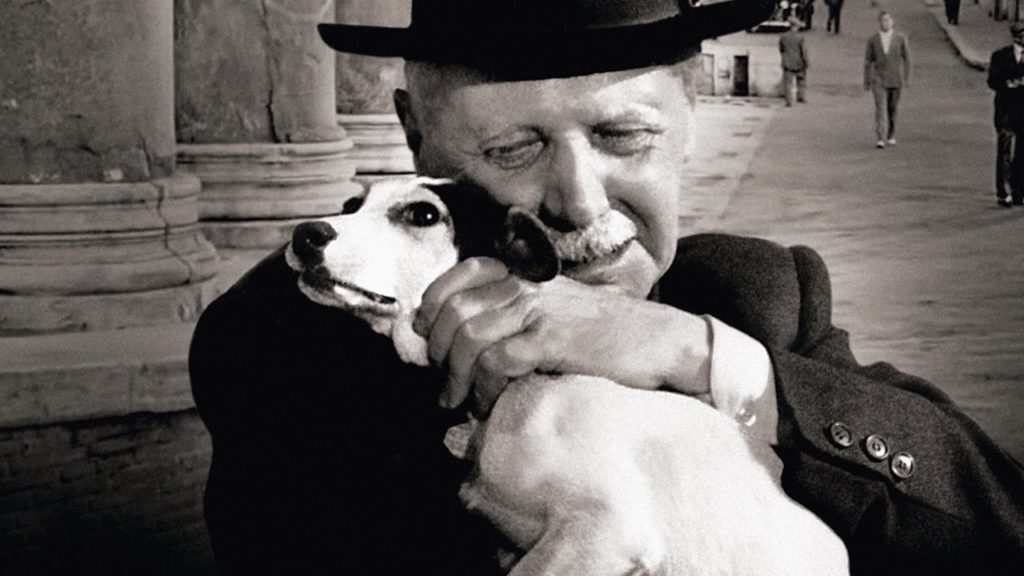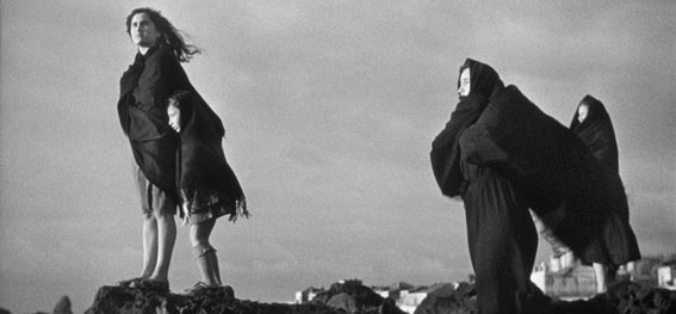
Starting this week and for the next two weeks, I’ll be writing about Italian Neorealism, its directors, and my favorite films from this ground-breaking cinema movement. The films and auteurs from Italian Neorealism have had an enormous influence on filmmakers to-date. Recently, the films Roma, by Alfonso Cuarón, Tangerine by Sean Baker, and 2021 award-winning Nomadland by Chloé Zhao –with its mix of professional and non-professional actors– come to mind. I always tell my students of the importance of looking back to the films of the great masters. These films are timeless, imbued with meaning and artistry. Here is an introduction to Italian Neorealism, for those film lovers not too familiar with it.

Italian Neorealism
A group of filmmakers, in post-World War II Italy, rejected the conventional style of Italian productions and left the studio setting for the streets of Rome and other locations striving for faithfulness to everyday life in their films. Due to years of war and its aftermath, neorealists launched into the creation of humanist films with a great sense of urgency, in order to understand and honestly portray the social reality of their country. This moral stance validated the narrow view held by many critics of Italian Neorealism, who overemphasized the movement’s social realism and minimized its aesthetics. This traditional view defines neorealism with a set of general characteristics including popular setting, social content, historical actuality, and political commitment. But the neorealists were not only concerned with social realism in their works, they also sought a new film language, and innovative uses of the medium in order to express reality as it is, in all its beauty and ambiguity.
In his book, Italian Cinema From Neorealism to the Present, Peter Bondanella writes that the neorealist filmmakers rarely, if ever, equated their artistic intentions with traditional realism. For example, Roberto Rossellini, often called the father of Italian Neorealism for his groundbreaking film Roma CittaAperta (Rome Open City,1945), simply stated that for him “realism is the artistic form of truth.” He explained that truth is achieved by portraying reality in its totality. Rossellini and his fellow filmmakers sought to express reality in an uncompromising and concrete way, giving true and appropriate value to everything within reality. Rossellini recognized that this – to reach an understanding of things and to express them truthfully and thoroughly – is not an easy task, and is perhaps impossible, because “to give anything its true value means grasping its real universal meaning.” I take this to mean that true reality is hard to grasp because it is not tangible, it is beyond the mind and the senses. It lies in the realm of the spirit.

Here’s a list of the most prominent films from the period: Rossellini’s war trilogy, Roma Citta Aperta (Rome Open City, 1945), Paisa (Paisan, 1946), Germania Anno Zero (Germany Year Zero, 1947); Vittorio De Sica’s Sciuscia (Shoeshine, 1946), Ladri di Biciclette (Bicycle Thief, 1948) and Umberto D. (1951); and Luchino Visconti, La Terra Trema (The Earth Trembles, 1948)
